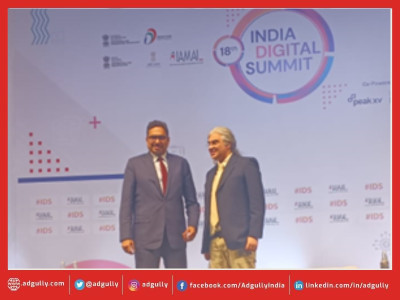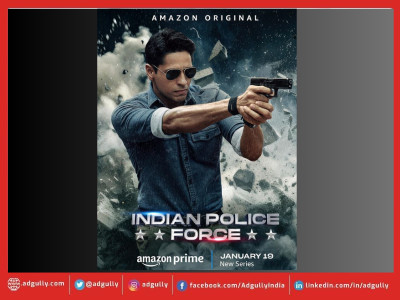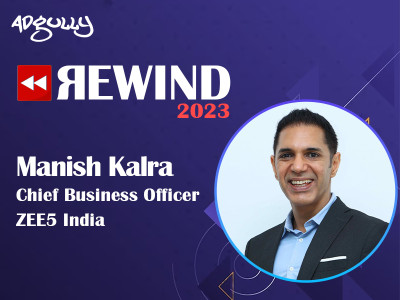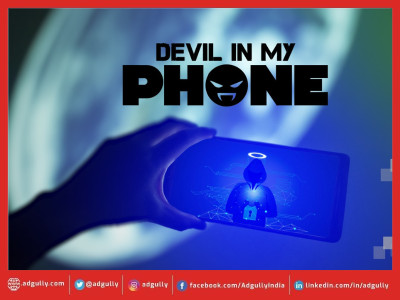Voot Select will be the home of stories: Gourav Rakshit
Viacom18 Digital Ventures has launched its latest offering – Voot Select, a video streaming subscription service under their OTT platform, Voot. After their AVOD business turned profitable and reached the 100 million subscriber milestone earlier this year, the digital arm of Viacom18 Media decided to spin off its premium content by offering it behind a paywall.
But why invest in building a subscription business at all, especially when the India SVOD business is fiercely competitive, investment intensive and users are fickle in their loyalty?
For one, the OTT business is set to reach Rs 16,000 crore in 2023, according to KPMG’s ‘Unravelling the Digital Video Consumer’. The business stood at Rs 38,000 crore in FY19, thus a growth of over 400 per cent is expected.
Voot has had some success with their OTT offering. The media network shared that Voot Kids, their edutainment offering, has 2.5 million downloads with each user spending 55 minutes daily on the platform.
With their track record in building platform stickiness, they are confident about becoming a leading SVOD service targeted towards a mass market.
Read More: Voot Select – the new home for great stories, now LIVE on Voot
In an interaction with Adgully, Gourav Rakshit, COO, Viacom18 Digital Ventures, and Ferzad Palia, Head - Voot Select, Youth, Music and English Entertainment, Viacom18, explore the various aspects of building an SVOD business in India.
Content Strategy
Ferzad Palia: We’re very clear about our philosophy that we want to do stories for everyone. Our pricing is very aggressive because we want to make it available to a wider base of people. The special introductory offer that we’ve made of Rs 499 a year is extremely aggressive considering the width of content that we have. We are confident that the adoption is going to be quick and significant. We have the advantage of having 100 million users from our AVOD business, which will be our first port of call.
We have the limited Rs 499 offer to bring more consumers into the funnel and see how they are reacting to this brand new service. The vision for us, even in the pricing, is that we should be accessible and affordable to a large number of people. We don’t want to be the elite service. While there is virtue in that market, that’s not what we are about. Currently, SVOD is largely the preserve of the 6-8 metros, but that is all set to change.
Value proposition
Ferzad Palia: We’ve got the best of international content, 1,500+ movies in 9 languages, phenomenal originals, 24 hour before TV, the best reality shows, and we will keep bringing better experiences of that content to fans behind the paywall. If you want more out of a particular show, then Voot Select is for you.
Sports content
Ferzad Palia: We have a 24-hour feed coming from Real Madrid TV and we want to see how that is working for consumers. It does not include live games, but fan-related content, including interviews, old match footage, history, and this is content they are creating on a weekly basis.
24 hour premiere – compelling?
Ferzad Palia: 47 per cent of viewers on Voot watched a new episode within 2 hours of its release. That got us thinking, if there is such a need to consume content when it drops at 7-8 am in the morning, how would people respond to a digital premiere? When you follow such stories on a daily basis, you tend to become invested in them. When we tested this in the market, the response was overwhelmingly positive.
Unscripted content library
Ferzad Palia: We are the single largest leader of unscripted entertainment in the country. Today, if you look at OTT services, it is very uni-dimensional. There are series and maybe some movies. As the consumer evolves, they want more choice. There is a demand to see this kind of content that nobody is meeting. We have ‘America’s Got Talent’, ‘Britain’s Got Talent’, ‘Shark Tank’, and watching it live with the rest of the world is very compelling.
Pricing Strategy
Gourav Rakshit: The pricing strategy, we are fortunate that we are not the first, and have been learning on the back of many that have gone before us offering different price points. We’ve run a few experiments on our platform and found that Rs 99 was something that the market can absolutely bear. There will be a segment of people who buy the annual pack just because they fall in love with the content or become familiar with it but the Rs 99 price point is where we’ll get the majority, based on early experiments, and people will go in and out of subscription potentially on the Voot platform, which always has something for everyone. That will work for us.
Target audience
Gourav Rakshit: The early adopters of SVOD who already have a few services would probably first sign up with us as well. We’re obviously using a fairly expansive marketing strategy to target them so they know what content is on the platform and they can find us. The other big audience I think is the 100 million MAUs on VOOT. These are very active users and love the content on Voot, so there will be a percentage who will pay for our 24 hour advance, ad free experience because they are already bound to the network content. They could also be the first time users of a subscription service.
There could also be another group that does not know Voot for the kind of services that we’re putting out. There we will have to take a direct to consumer approach both in education and online acquisition to try and create awareness for what we have on the platform. The advantage for those users is that the content is very sticky. We will obviously have to pay to acquire those users because they are not part of the natural consumer profile that we have but the assumption is that they will be a little stickier as well because the content is not available anywhere else.
Subscriber growth
Gourav Rakshit: The ambition is to be No. 1 in the subscription space among the Indian OTTs. However because of the growth and adoption of subscription services and the number of subscriptions, where we would have to be at, would change just because that’s a macroeconomic factor. Irrespective of what that number looks like, we hope to be disproportionately gain market share versus everyone else because that is the proof of the pudding.
Marketing strategy
Gourav Rakshit: Our media mix is very compelling. In the larger markets OOH can work because the catchment area is so concentrated. As you go into smaller towns, you could do it but for smaller RoI. Right now, there is concentration is the main metros and OOH would definitely be a big part of the strategy there. TV obviously travels well across the country and so does print. We will leverage different aspects of the media mix to try and reach all consumer segments.
The platform will be promoted via the content promos. We are fairly confident about our shows and are going to keep the first episode free. I think most people would subscribe after they see the first episode of our shows. The proof of the pudding for us is in the eating and as we put that content out there, we should get a lot of trials and people using the service.
Separate Identity on Digital
Gourav Rakshit: The the fandom that we play into right now would be primarily on Voot. The scale which we operate at is why we have such a rapid following on digital. Narrowcasting that to just the Select audience will be restrictive.
That is the kind of bet we are going to take for Voot Select and make it 3X of what it can do in terms of interactions. Voot Select will be the home of stories. That’s where the differentiation is.
Binge viewing and its impact on watch time
Ferzad Palis: Binge viewing happens across the board. That does not change for the TV content available on Voot Select. With originals and international content, we do see the potential of binge watching going up a bit. Hopefully, that will keep the time spent and watch time higher.
Device oriented consumption
Ferzad Palia: There is a lot of consumption of content that is happening on connected TVs, especially the long form stuff. Premium OTT is largely long form content. We are aptly positioned to be viewed on TV as well as mobile. That trend would potentially change as the market for connected TVs grows.
Self-Regulation
Ferzad Palia: As a network, we’ve always been cautious about self-regulation because that’s the same thing we follow on television. OTT does allow you a little more flexibility than other mediums, but given that we’ve been in the business for so long, we will continue to tell good stories that appeal to a broader base.
Investment in content
Gourav Rakshit: The investments are significantly more than just the investments in content. People seem to be obsessing over the originals content but you also have to look at the partnerships. While the investment in content is substantial, as a network we invest so much in content that it is not the same compared to a business which does not have a broadcast play talking about what they are spending on content.
Road to profitability
Gourav Rakshit: Having made Voot profitable, we have one area which is an investment and another area which is yielding a return. While we will continue to invest in Voot and make it bigger, I don’t have to worry about its roi right now. That gives us a significant opportunity to invest in the Kids’ and Select business. I know the expectation to yield returns is 5 years but I am looking at 3 years by virtue that we are one of the only profitable OTTs in the space.
I think it’s the road to profitability that most people have to look at. Voot, a business that we launched a little over three years ago, is now profitable. It is more important to understand the road to profitability than to be profitable right away.
Key differentiator
Gourav Rakshit: The ability to understand what resonates with audiences is what will differentiate us in the industry. I think we’ve done that in AVOD and have some proven stripes in being able to read our consumers. That’s going to be our differentiator – creating meaningful content for them. Content is expensive and if we don’t have a good read on what works and what doesn’t – we are likely to lose a lot of money.
Most SVOD users have an average of two subscriptions. How are you going to acquire those users and create stickiness to your platform?
Gourav Rakshit: I think that’s going to change in the Indian market. All these patterns that we’re talking about are based on the first 1-2 million subscribers who have very deep pockets. I think subscription patterns where people will opt in and out of services. They might not use more than two services at a time but they will try all the services assuming that there is relevance. Given that we already have 100 million users on our platform and I expect that to grow by 50% in the year to come. That is something that is going to yield value to us.

















Share
Facebook
YouTube
Tweet
Twitter
LinkedIn